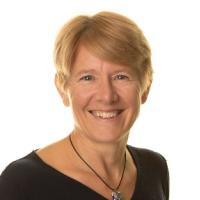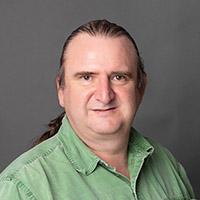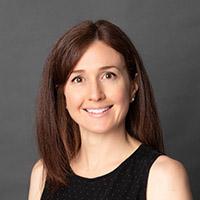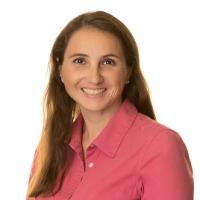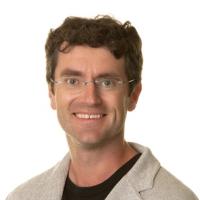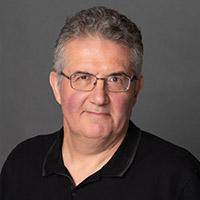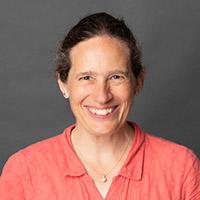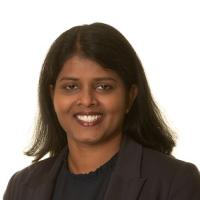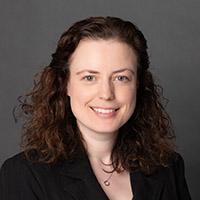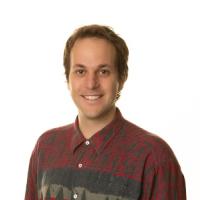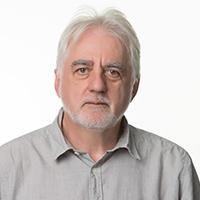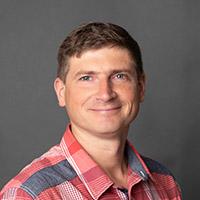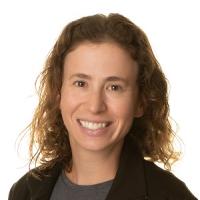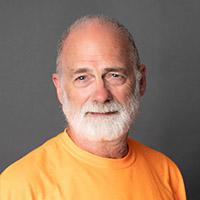Information Box Group
Anas Abdallah
Associate Professor and AFM Coordinator
Research Area: Actuarial and Financial Mathematics
Research Profile: Actuarial Science
My research area is in actuarial science, with focus on: dependence modeling, loss reserving, capital allocation and predictive modeling in non-life insurance and ratemaking/pricing.
The objective of my research is to propose hierarchical statistical approaches to model dependence within and between risks in non-life insurance in general, and in a loss reserving context in particular. One of the most critical problems in Property & Casualty (P&C) insurance is to determine an appropriate reserve for incurred but unpaid losses. These provisions generally comprise most of the liabilities of a non-life insurance company. The global provisions are often determined under an assumption of independence between the lines of business. However, most risks are related to each other in practice, and this correlation needs to be taken into account.

Anas Abdallah
Associate Professor and AFM Coordinator
N. Balakrishnan
Distinguished University Professor
Research Area: probability-statistics
Research Profile: Order statistics, distribution theory.
My research interests are in order statistics, outliers, distribution theory, statistical inference, records, multivariate analysis, and industrial statistics. Order statistics arise naturally in many problems such as life-testing and reliability experiments, outlier detection, robust inference, etc. My work in this area covers both theoretical (like bounds, approximations, recurrence relations, characterizations, etc.) as well as applied (like linear inference, acceptance sampling plans, tolerance limits, prediction, etc.) aspects. Another major area of interest to me is statistical distribution theory. Statistical distributions play a fundamental role in many applied problems and form the basis for model building and parametric statistical inference. My contributions to this area have been through proposing new distributions, developing inference techniques for several distributions, and deriving characterizations of distributions. My most recent work concerns order statistics under non-standard conditions. Work in this direction is carried out by using permanents (of some special matrices) and their properties.
Hans U. Boden
Professor
Research Area: geometry-topology
Research Profile: Gauge theory and low-dimensional topology.
My research concerns the topology and geometry of character varieties and moduli spaces of flat connections, and applications to invariants of knots, links, and 3-manifolds.
Ben Bolker
Professor, Director of School of Computational Science and Engineering and Associate Chair (Graduate)
Research Area: mathematical-biology
Research Profile: mathematical-biology.
I work on a wide variety of problems in theoretical ecology and evolution. Mathematical interests: the use of “moment equations” (equations for the mean, variance, and second-order spatial statistics such as spatial correlation) to understand the qualitative dynamics of biological communities (e.g. hosts and parasites, competing plant species)interacting in continuous spatial arenas. Biological interests: host/parasite interactions, broadly defined to include any “intimate association” among natural enemies and their victims: viruses, bacteria, and classical macroparasites. I work on the general dynamics of infectious disease epidemics, and particularly on the evolution of virulence. Statistical interests: fitting of parameters for ecological and evolutionary models, especially in a maximum likelihood settings. My recent work has focused on improvement and dissemination of tools for fitting generalized linear mixed models.

Ben Bolker
Professor, Director of School of Computational Science and Engineering and Associate Chair (Graduate)
Blaise Bourdin
Professor, Canada Research Chair
Lia Bronsard
Professor
Research Area: Analysis, applied-mathematics
Research Profile:Nonlinear partial differential equations, interface dynamics.
Interface dynamics is a study of the qualitative behaviour of solutions to certain nonlinear partial differential equations known as singular reaction-diffusion systems. These systems are usually models developed by material scientists and mathematicians in order to understand the properties of interfaces or phase boundaries in alloys, polymers or glasses. Under stress, the alloy divides into several regions where the orientation of the molecules differs. The boundary between these regions evolve in time in order to decrease surface tension. The mathematical models developed to study this evolution lead to geometrical problems for the interfaces. An important example is mean curvature evolution, where the normal velocity of the interface is given by its mean curvature. A formal asymptotic tool called the method of matched asymptotic expansion is often used to predict the behaviour for the evolution of the interfaces. Once this formal study is done, the problem is then to develop analytical and geometrical tools to verify rigorously the expected behaviour. Since the models involve nonlinear partial differential equations, new tools are often needed to successfully complete the work.
Angelo Canty
Associate Professor
Research Area: probability-statistics
Research Profile: Computational statistics
My research focuses on the applied uses of computationally intensive methods in statistics. One area in which computaional power is particularly useful is in the use of Monte Carlo approximations which can replace intractable calculations or asymptotic argeuments. The use of these methods, however, require reliable software and good diagnostics for when there may be problems with the underling assumptions. In my doctoral work I examined diagnostics for Markov chain Monte Carlo methods which are particularly important in Bayesian statistics. Since then I have worked on the bootstrap and other resampling methods. A suite of functions that I have developed to implement many of these methods is used worldwide. These functions allow for the application of resampling methods in many fields. Much remains to be done, however. I am currently working on applied graphical diagnostics for bootstrap failure. I am also examining new areas of application for these methods and improvements on existing methods. My latest area of research is in Monte Carlo implementations of the EM algorithm for likelihood inference when more standard methods cannot be used.
Aaron Childs
Associate Professor and TA Coordinator
Research Area: probability-statistics
Research Profile: Statistical Inference, order statistics, outliers
I am interested in the diverse applications of order statistics to statistical inference and outlier accomodation. Some of my research involves order statistics from independent and non-identically distributed (I.NI.D) random variables. I.NI.D. random variables are a generalization of the multiple-outlier slippage model, and therefore have applications to outlier accomodation. Order statistics also have applications in classical inference problems; for example I have developed some hypothesis tests based on order statistics and inverse sampling which provide a more efficient alternative to the standard chi-square test for homogeneity. I have also developed a set of Maple programs that allow one to compute series approximations for moments of order statistics. Another area of interest to me is waiting time problems. My contribution to this area has been to develop new methods, some of which are based on uniform random variables and generating functions, which enable one to solve a wide variety of very complex waiting time problems. I have also been involved in some consulting projects, one of which requires testing for independence between virus and respiratory disease data using time series analysis.
Erin Clements
Assistant Professor
Katherine Davies
Assistant Professor
Research Area: Probabiility and Statistics
David Earn
Professor
Research Area: applied-mathematics, mathematical-biology
Research Profile: Epidemiology, Ecology, Evolutionary Game Theory
Biological systems involve intricate interactions on many spatial and temporal scales. Mathematical models often make it possible to identify mechanisms behind complex biological processes and to predict the outcomes of environmental changes. My current research can be classified according to the time scale over which biological changes occur. Short time scales: Population dynamics of ecological and epidemiological systems. This work, which has implications for conservation of endangered species and eradication of infectious diseases, makes use of modern bifurcation theory. Analytical investigations of discrete maps and differential equations are usually supplemented by extensive numerical studies. Long time scales: Evolutionary dynamics of behavioural traits. This work, which is mainly based on game theoretical analysis, clarifies the adaptive significance of animal behaviour, ranging from cooperation and parental care to foraging and cannabilism.
Shui Feng
Professor and Associate Chair (Statistics)
Research Area: probability-statistics
Research Profile: Stochastic processes, interacting particle systems
My research interests are in nonlinear stochastic model, large deviation, hydrodynamic limit and stochastic models in genetics. Some concrete problems are the long-time behaviour, the phase structure and metastability of the corresponding system. The method used comes from probability theory, stochastic processes and stochastic analysis.
Noah Forman
Associate Professor
I specialize in probability theory, specifically in combinatorial stochastic processes. This means studying random objects and processes on combinatorial spaces, such as random graphs, as well as studying continuum scaling limits or analogues of these objects. Much of my research concerns exchangeability and continuum random trees.
Cameron Franc
Associate Professor
Jean Pierre Gabardo (1958 - 2024)
Professor
Research Area: Analysis
Research Profile: Fourier analysis, functional analysis
My research interests are mainly concentrated in the areas of Fourier Analysis and Functional Analysis. More recently, moments problems as well as their continuous analogues which deal with positive-definite functions and Fourier transform of measures have played an important role in my research. These problems have many applications to the theory of non-trigonometric expansions of functions using Riesz bases or frames of exponentials and to the non-uniform sampling theory in various spaces of band-limited functions. Reproducing kernel Hilbert spaces, Complex Analysis, and the theory of (Schwartz) Distributions are important tools used in these areas of Fourier Analysis.
Matheus Grasselli
Professor and Deputy Provost
Research Area: Financial Mathematics
Research Profile: Financial Mathematics, Mathematical Physics, Information Geometry
My main research interests lie in the area of mathematical finance – the application of stochastic analysis and probability theory to the understanding and modelling of financial markets. Specific projects I am involved with include numerical and theoretical optimal portfolio selection and modelling of positive interest rates. I am also interested in classical and quantum information geometry. My work in this area ranges from the construction of infinite dimensional manifolds of probabilities to the applications of such geometric objects to models in fluid dynamics and quantum information.”
Ian Hambleton
Dr. F. Ronald and Helen E. Britton Professor of Mathematics
Research Area: geometry-topology
Research Profile: Algebraic and geometric topology
One of the unifying principles in geometry is that complex systems, such as configurations of planets and stars can often be understood by means of their symmetries. Familiar symmetries include the rotations or reflections of solids in space and the Lorentz transformations of space- time. Discrete invariants and groups of symmetry of continuous motions are studied in algebraic topology, while geometric topology is concerned with the properties of differential manifolds, or higher-dimensional surfaces. Topology developed rapidly in the period between 1950 and 1980 and is now one of the most active fields of mathematics. Symmetries of differentiable manifolds are related to algebra and number theory through group theory, and to partial differential equations and analysis through differential forms. My recent work deals with finite group actions on 4-dimensional manifolds and their connections to gauge theory, and infinite discrete group actions on high-dimensional manifolds. Both areas provide many opportunities for interesting research problems.

Ian Hambleton
Dr. F. Ronald and Helen E. Britton Professor of Mathematics
Megumi Harada
Professor and Canada Research Chair
Research Area: geometry-topology
Research Profile: Geometry and Topology
More specifically, I compute topological invariants, such as equivariant cohomology theories, of spaces with such structure. Symplectic geometry is the mathematical framework of classical physics; hyperkahler manifolds are symplectic manifolds wiht extra structure, are of particular recent interest due to their connections to theoretical physics. I am mainly concerned with the theory of symmetries of manifolds with these structures, as encoded by a Hamiltonian Lie group action, i.e. there exists a moment map on M encoding the action by Hamiltonian flows. Such group actions on symplectic and hyperkahler manifolds arise naturally in the context of physics, representation theory, and algebraic geometry. To a Hamiltonian space, one associates a symplectic (hyperkahler) quotient, which inherits a symplectic (hyperkahler) structure from the original manifold. The main theme of my recent research is the study of the topology and equivariant topology of these quotients, in particular the computation of their cohomology and complex K-theory rings.
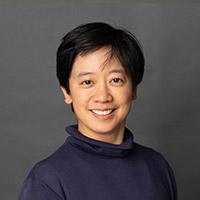
Megumi Harada
Professor and Canada Research Chair
Bradd Hart
Professor
Research Area: Mathematical Logic
Research Profile: Model theory and mathematical logic.
My work has been primarily in model theory and to some degree in set theory. Model theory is the study of the construction and classification of structures inside some specific class of mathematical objects. It has both pure and applied sides which interact heavily. In applied model theory one takes some mathematical object in a given language, say the real numbers in the language of fields with exponentiation, and very carefully analyzes the sub-sets which are definable. This type of elimination theory has several applications in number theory and real algebraic geometry. An example of my work in this area is the first article listed below where we study certain model theoretic conditions in the context of varieties of algebras.
Pure or abstract model theory deals with several issues. The first, which sounds vaguely philosophical, is the question, “Is it possible to know if two structures are not isomorphic?” This question is at the heart of classification theory. On the more practical side is stability theory which starts out by severely restricting the classes of structures one looks at so as to have a robust dimension theory available. Luckily common mathematical objects such as modules and algebraic groups are examples of stable structures.
Deirdre Haskell
Professor
Research Area: Mathematical Logic
Research Profile: Model theoretic algebra
I am interested in applying the techniques of model theory, which studies algebraic structures in a very general setting, to the examination of particular algebraic structures, especially valued fields.
Pratheepa Jeganathan
Assistant Professor
Reserach Area: Statistics and data mining
Research Profile: Statistics and data mining
Dr. Jeganathan’s research focuses on developing statistical and computational methods to analyze multi-domain data, especially addressing statistical challenges in microbiome multi-omic and spatial multi-omic data analysis. Current research includes multi-table integration, preprocessing and transformation of high-throughput sequencing data, visualization, hierarchical modeling, Bayesian statistics, statistical inference, block bootstrap method, data mining, and approximation theory in statistics.
Caroline Junkins
Assistant Professor
On leave until May 2025

Caroline Junkins
Assistant Professor
On leave until May 2025
Nicholas Kevlahan
Professor
Research Area: applied-mathematics, Fluids & Turbulence
Research Profile:
applied-mathematics, Turbulent fluid flow, wavelet methods My research focuses on the theory and computation of fluid turbulence, with a special interest in dynamically adaptive numerical methods based on the wavelet transform. There are numerous problems that remain unresolved in the theory of turbulence, despite more than 100 years of research on the subject. A complete and precise theory of turbulence would be useful in areas as diverse as aerodynamics, combustion, urban pollution modelling, weather prediction and climate modelling. Although we are still far from being able to formulate such a theory, much progress has been made in the last few decades. The aim of my research is to combine several recent discoveries in order to develop a new approach to turbulence modelling. These discoveries include wavelet transforms (which are used to compress data and solve partial differential equations), penalisation methods (which can be used with any numerical method to simulate complex geometries, such as an airplane), and coherent vortices (flow structures that control turbulence dynamics). Current research projects include adaptive multiscale climate modelling, fluid-structure interaction, compressive sampling and the role of turbulence in star formation.
Sharon King-Yu
Assistant Professor
Research Area: Computational Statistics
Anastasis Kratsios
Assistant Professor
I develop and study universal deep learning models capable of leveraging geometric structures in mathematical finance and data science problems.
Hari Kunduri
Associate Professor
Research Area: Geometry and topology, mathematical physics
My research focusses on geometric problems in general relativity and related problems in Riemannian geometry associated to asymptotically flat and hyperbolic manifolds. In particular I study black hole solutions to Einstein’s equations in four and higher dimensions. Such geometries are of intrinsic interest in the context of Lorentzian and Riemannian geometry as well as in developments in theoretical physics.
Miroslav Lovric
Professor
Research Area: geometry-topology, Mathematics Education
Research Profile: Differential Geometry, Applications, and Mathematics Education
My research dealt with some aspects of the curvature of a Riemannian manifold, in particular the way various curvature assumptions influence the topological properties (pinching theorems). I had also employed the tools of Riemannian geometry (especially foliations on Riemannian manifolds) in order to study the properties of orbits of vector fields coming from various control theory problems. In collaboration with Ernst Ruh and Maung Min-Oo, I obtained new parametrization of the space of multivariate normal distributions (and a new distance formula). My new research directions consist of applying math to problems in medicine and biology (in collaboration with colleagues and grad students from Health Sciences), and also mathematics education. Besides investigating my own teaching practice, I have been studying transition from secondary to tertiary mathematics, as well as the ways mathematics textbooks promote learning of mathematics.
David Lozinski
Associate Professor and MFM Program Director
Research Area: Financial Mathematics
Research Profile: Financial Mathematics
My research interests concern the mathematical modelling and analysis of problems in the area of quantitative finance. Of particular interest to me are problems that arise in credit risk, including issues of correlation, counterparty exposure, and capital assessment and allocation.

David Lozinski
Associate Professor and MFM Program Director
Siyuan Lu
Associate Professor
Paul McNicholas
Professor, Canada Research Chair
Research Area: Computational Statistics
Research Profile: Computational Statistics
Dr. McNicholas’ research focuses on computational statistics, and he is at the cutting edge of international research on mixture model-based clustering and classification. Current research includes work on big data featuring outlying or spurious points, with a focus on classification, clustering, dimension reduction and discriminant analysis. Another important aspect of Dr. McNicholas? current research is work on non-Gaussian mixture models, which present a useful alternative to the Gaussian mixture model. Work on clustering categorical data and data of mixed type is ongoing. Applications of Dr. McNicholas? research are readily found in several fields, including bioinformatics, sensometrics, and psychometrics.

Paul McNicholas
Professor, Canada Research Chair
Patrick Naylor
Assistant Professor
Research area: low-dimensional topology
Research interest: I study low-dimensional topology: mainly knots in 3-manifolds and surfaces embedded in 4-manifolds. I’m particularly interested in understanding how different notions of equivalence for 2-dimensional knots inform 4-dimensional exotica.
Dmitry Pelinovsky
Professor
Research Area: applied-mathematics
Research Profile: Partial differential equations, solitons
My research concentrates in the areas of applied nonlinear partial differential equations, spectral analysis, nonlinear waves (solitons), mathematical modeling in nonlinear optics, photonic crystals and Bose-Einstein condensates.
Traian Pirvu
Associate Professor
Research Area: Financial Mathematics
Research Profile: My main research lie in the area of financial mathematics with a special emphasis on optimal investment and pricing in incomplete markets. My projects are on equilibrium pricing of non tradable risks, optimal portfolio selection with regulatory constraints and time consistent portfolio management.
Bartosz Protas
Professor and Department Chair
Research Area: applied-mathematics, Fluids & Turbulence
Research Profile: applied-mathematics, Fluids & Turbluence
applied-mathematics, Fluids & Turbluence I am an applied mathematician interested primarily in problems combining the theoretical and computational fluid dynamics with the theory of optimization and control. In addition, I also have a broad interest in applied-mathematics and scientific computing. My research is a blend of fundamental investigations in core problems of hydrodynamics and more applied studies relevant for industrial fluid mechanics. I focus on the use of advanced mathematical methods to develop efficient computational algorithms and models useful for studying problems in fluid mechanics. My administrative responsibilities include directing McMaster’s School of Computational Science and Engineering.
Jenna Rajchgot
Associate Professor
Eric T. Sawyer
McKay Chair in Mathematics, Professor
Research Area: Analysis
Research Profile: Harmonic analysis, partial differential equations and function theory
Harmonic analysis, partial differential equations and function theory My research interests in harmonic analysis center on weighted norm inequalities for fractional and singular integrals, with applications to problems in partial differential equations such as regularity of solutions to the oblique derivative problem, sharp estimates for the eigenvalues of Schrodinger operators, regularity for the Monge-Ampere equation and distortion of Hausdorff measure under quasiconformal maps. My interests in function theory include interpolation and corona problems on the unit ball in several complex variables.
Patrick Speissegger
Professor
Research Area: Mathematical Logic
Research Profile: Model Theory and Real Analytic Geometry
Adam Van Tuyl
Professor and Associate Chair (Undergraduate)
Research Area: Algebra
Research Interests: My research area is commutative algebra and its connection to other areas like combinatorics and algebraic geometry. I am interested in homological invariants, edge ideals, simplicial complexes, sets of points in (multi)-projective spaces, toric ideals, symbolic powers of ideals, and combinatorial matrix theory

Adam Van Tuyl
Professor and Associate Chair (Undergraduate)
McKenzie Wang
Professor
Research Area: geometry-topology
Research Profile: Differential geometry, geometric analysis
My research is about prescribing the curvature of manifolds, which could mean requiring curvature to be positive, zero, or negative in some suitable sense, or requiring some natural differential equation involving curvature to hold on the manifold.
One class of manifolds which I study is motivated from physics. According to Einstein’s theory of relativity, gravity exhibits itself mathematically in the bending of space-time. The famous Einstein field equation relates the Ricci curvature, which is the relevant notion of curvature or “bending” in relativity, to the matter fields present. Can Einstein’s equation hold on any manifold, or is the topology of space-time restricted, or determined by it ? Is the geometry of relativity also compatible with the elementary particles we observe ? Are there continuous families of solutions of Einstein’s equation ? What kind (range) of geometric properties are exhibited by Einstein manifolds? The analogs of these questions in all dimensions and for manifolds with positive definite inner products provide the driving force behind some of my research projects.
Gail S.K. Wolkowicz
Professor
Research Area: applied-mathematics, mathematical-biology
Research Profile: Dynamical systems, bifurcation theory, population dynamics, mathematical ecology and epidemiology
My students and I have been formulating and analyzing models motivated by questions in ecology and epidemiology. For example, one goal is to better understand basic population dynamics so that measurable criteria can be developed, enabling scientists to predict combinations of cultures of micro-organisms most effective and safest for use in such processes as water purification and biological waste decomposition. Other applications include pest control, the prevention of species’ extinction or the control or eradication of certain diseases. In order to elicit all the potential dynamics, a bifurcation theory approach is used so that the full spectrum of behaviour can be predicted for all appropriate parameter ranges and initial states. Computer simulations are used to elucidate complicated dynamics, to test conjectures, and to reveal properties of the models that are useful in developing analytic proofs. Symbolic computation is used to carry out complicated calculations. The analyses often lead to interesting abstract mathematical problems in dynamical systems, ordinary, integro- and functional differential equations, and bifurcation theory.
Anas Abdallah
Associate Professor and AFM Coordinator
Research Area: Actuarial and Financial Mathematics
Research Profile: Actuarial Science
My research area is in actuarial science, with focus on: dependence modeling, loss reserving, capital allocation and predictive modeling in non-life insurance and ratemaking/pricing.
The objective of my research is to propose hierarchical statistical approaches to model dependence within and between risks in non-life insurance in general, and in a loss reserving context in particular. One of the most critical problems in Property & Casualty (P&C) insurance is to determine an appropriate reserve for incurred but unpaid losses. These provisions generally comprise most of the liabilities of a non-life insurance company. The global provisions are often determined under an assumption of independence between the lines of business. However, most risks are related to each other in practice, and this correlation needs to be taken into account.
Anas Abdallah
Associate Professor and AFM Coordinator
Research Area: Actuarial and Financial Mathematics
Research Profile: Actuarial Science
My research area is in actuarial science, with focus on: dependence modeling, loss reserving, capital allocation and predictive modeling in non-life insurance and ratemaking/pricing.
The objective of my research is to propose hierarchical statistical approaches to model dependence within and between risks in non-life insurance in general, and in a loss reserving context in particular. One of the most critical problems in Property & Casualty (P&C) insurance is to determine an appropriate reserve for incurred but unpaid losses. These provisions generally comprise most of the liabilities of a non-life insurance company. The global provisions are often determined under an assumption of independence between the lines of business. However, most risks are related to each other in practice, and this correlation needs to be taken into account.
N. Balakrishnan
Distinguished University Professor
Research Area: probability-statistics
Research Profile: Order statistics, distribution theory.
My research interests are in order statistics, outliers, distribution theory, statistical inference, records, multivariate analysis, and industrial statistics. Order statistics arise naturally in many problems such as life-testing and reliability experiments, outlier detection, robust inference, etc. My work in this area covers both theoretical (like bounds, approximations, recurrence relations, characterizations, etc.) as well as applied (like linear inference, acceptance sampling plans, tolerance limits, prediction, etc.) aspects. Another major area of interest to me is statistical distribution theory. Statistical distributions play a fundamental role in many applied problems and form the basis for model building and parametric statistical inference. My contributions to this area have been through proposing new distributions, developing inference techniques for several distributions, and deriving characterizations of distributions. My most recent work concerns order statistics under non-standard conditions. Work in this direction is carried out by using permanents (of some special matrices) and their properties.
N. Balakrishnan
Distinguished University Professor
Research Area: probability-statistics
Research Profile: Order statistics, distribution theory.
My research interests are in order statistics, outliers, distribution theory, statistical inference, records, multivariate analysis, and industrial statistics. Order statistics arise naturally in many problems such as life-testing and reliability experiments, outlier detection, robust inference, etc. My work in this area covers both theoretical (like bounds, approximations, recurrence relations, characterizations, etc.) as well as applied (like linear inference, acceptance sampling plans, tolerance limits, prediction, etc.) aspects. Another major area of interest to me is statistical distribution theory. Statistical distributions play a fundamental role in many applied problems and form the basis for model building and parametric statistical inference. My contributions to this area have been through proposing new distributions, developing inference techniques for several distributions, and deriving characterizations of distributions. My most recent work concerns order statistics under non-standard conditions. Work in this direction is carried out by using permanents (of some special matrices) and their properties.
Hans U. Boden
Professor
Research Area: geometry-topology
Research Profile: Gauge theory and low-dimensional topology.
My research concerns the topology and geometry of character varieties and moduli spaces of flat connections, and applications to invariants of knots, links, and 3-manifolds.
Hans U. Boden
Professor
Research Area: geometry-topology
Research Profile: Gauge theory and low-dimensional topology.
My research concerns the topology and geometry of character varieties and moduli spaces of flat connections, and applications to invariants of knots, links, and 3-manifolds.
Ben Bolker
Professor, Director of School of Computational Science and Engineering and Associate Chair (Graduate)
Research Area: mathematical-biology
Research Profile: mathematical-biology.
I work on a wide variety of problems in theoretical ecology and evolution. Mathematical interests: the use of “moment equations” (equations for the mean, variance, and second-order spatial statistics such as spatial correlation) to understand the qualitative dynamics of biological communities (e.g. hosts and parasites, competing plant species)interacting in continuous spatial arenas. Biological interests: host/parasite interactions, broadly defined to include any “intimate association” among natural enemies and their victims: viruses, bacteria, and classical macroparasites. I work on the general dynamics of infectious disease epidemics, and particularly on the evolution of virulence. Statistical interests: fitting of parameters for ecological and evolutionary models, especially in a maximum likelihood settings. My recent work has focused on improvement and dissemination of tools for fitting generalized linear mixed models.
Ben Bolker
Professor, Director of School of Computational Science and Engineering and Associate Chair (Graduate)
Research Area: mathematical-biology
Research Profile: mathematical-biology.
I work on a wide variety of problems in theoretical ecology and evolution. Mathematical interests: the use of “moment equations” (equations for the mean, variance, and second-order spatial statistics such as spatial correlation) to understand the qualitative dynamics of biological communities (e.g. hosts and parasites, competing plant species)interacting in continuous spatial arenas. Biological interests: host/parasite interactions, broadly defined to include any “intimate association” among natural enemies and their victims: viruses, bacteria, and classical macroparasites. I work on the general dynamics of infectious disease epidemics, and particularly on the evolution of virulence. Statistical interests: fitting of parameters for ecological and evolutionary models, especially in a maximum likelihood settings. My recent work has focused on improvement and dissemination of tools for fitting generalized linear mixed models.
Blaise Bourdin
Professor, Canada Research Chair
Blaise Bourdin
Professor, Canada Research Chair
Lia Bronsard
Professor
Research Area: Analysis, applied-mathematics
Research Profile:Nonlinear partial differential equations, interface dynamics.
Interface dynamics is a study of the qualitative behaviour of solutions to certain nonlinear partial differential equations known as singular reaction-diffusion systems. These systems are usually models developed by material scientists and mathematicians in order to understand the properties of interfaces or phase boundaries in alloys, polymers or glasses. Under stress, the alloy divides into several regions where the orientation of the molecules differs. The boundary between these regions evolve in time in order to decrease surface tension. The mathematical models developed to study this evolution lead to geometrical problems for the interfaces. An important example is mean curvature evolution, where the normal velocity of the interface is given by its mean curvature. A formal asymptotic tool called the method of matched asymptotic expansion is often used to predict the behaviour for the evolution of the interfaces. Once this formal study is done, the problem is then to develop analytical and geometrical tools to verify rigorously the expected behaviour. Since the models involve nonlinear partial differential equations, new tools are often needed to successfully complete the work.
Lia Bronsard
Professor
Research Area: Analysis, applied-mathematics
Research Profile:Nonlinear partial differential equations, interface dynamics.
Interface dynamics is a study of the qualitative behaviour of solutions to certain nonlinear partial differential equations known as singular reaction-diffusion systems. These systems are usually models developed by material scientists and mathematicians in order to understand the properties of interfaces or phase boundaries in alloys, polymers or glasses. Under stress, the alloy divides into several regions where the orientation of the molecules differs. The boundary between these regions evolve in time in order to decrease surface tension. The mathematical models developed to study this evolution lead to geometrical problems for the interfaces. An important example is mean curvature evolution, where the normal velocity of the interface is given by its mean curvature. A formal asymptotic tool called the method of matched asymptotic expansion is often used to predict the behaviour for the evolution of the interfaces. Once this formal study is done, the problem is then to develop analytical and geometrical tools to verify rigorously the expected behaviour. Since the models involve nonlinear partial differential equations, new tools are often needed to successfully complete the work.
Angelo Canty
Associate Professor
Research Area: probability-statistics
Research Profile: Computational statistics
My research focuses on the applied uses of computationally intensive methods in statistics. One area in which computaional power is particularly useful is in the use of Monte Carlo approximations which can replace intractable calculations or asymptotic argeuments. The use of these methods, however, require reliable software and good diagnostics for when there may be problems with the underling assumptions. In my doctoral work I examined diagnostics for Markov chain Monte Carlo methods which are particularly important in Bayesian statistics. Since then I have worked on the bootstrap and other resampling methods. A suite of functions that I have developed to implement many of these methods is used worldwide. These functions allow for the application of resampling methods in many fields. Much remains to be done, however. I am currently working on applied graphical diagnostics for bootstrap failure. I am also examining new areas of application for these methods and improvements on existing methods. My latest area of research is in Monte Carlo implementations of the EM algorithm for likelihood inference when more standard methods cannot be used.
Angelo Canty
Associate Professor
Research Area: probability-statistics
Research Profile: Computational statistics
My research focuses on the applied uses of computationally intensive methods in statistics. One area in which computaional power is particularly useful is in the use of Monte Carlo approximations which can replace intractable calculations or asymptotic argeuments. The use of these methods, however, require reliable software and good diagnostics for when there may be problems with the underling assumptions. In my doctoral work I examined diagnostics for Markov chain Monte Carlo methods which are particularly important in Bayesian statistics. Since then I have worked on the bootstrap and other resampling methods. A suite of functions that I have developed to implement many of these methods is used worldwide. These functions allow for the application of resampling methods in many fields. Much remains to be done, however. I am currently working on applied graphical diagnostics for bootstrap failure. I am also examining new areas of application for these methods and improvements on existing methods. My latest area of research is in Monte Carlo implementations of the EM algorithm for likelihood inference when more standard methods cannot be used.
Aaron Childs
Associate Professor and TA Coordinator
Research Area: probability-statistics
Research Profile: Statistical Inference, order statistics, outliers
I am interested in the diverse applications of order statistics to statistical inference and outlier accomodation. Some of my research involves order statistics from independent and non-identically distributed (I.NI.D) random variables. I.NI.D. random variables are a generalization of the multiple-outlier slippage model, and therefore have applications to outlier accomodation. Order statistics also have applications in classical inference problems; for example I have developed some hypothesis tests based on order statistics and inverse sampling which provide a more efficient alternative to the standard chi-square test for homogeneity. I have also developed a set of Maple programs that allow one to compute series approximations for moments of order statistics. Another area of interest to me is waiting time problems. My contribution to this area has been to develop new methods, some of which are based on uniform random variables and generating functions, which enable one to solve a wide variety of very complex waiting time problems. I have also been involved in some consulting projects, one of which requires testing for independence between virus and respiratory disease data using time series analysis.
Aaron Childs
Associate Professor and TA Coordinator
Research Area: probability-statistics
Research Profile: Statistical Inference, order statistics, outliers
I am interested in the diverse applications of order statistics to statistical inference and outlier accomodation. Some of my research involves order statistics from independent and non-identically distributed (I.NI.D) random variables. I.NI.D. random variables are a generalization of the multiple-outlier slippage model, and therefore have applications to outlier accomodation. Order statistics also have applications in classical inference problems; for example I have developed some hypothesis tests based on order statistics and inverse sampling which provide a more efficient alternative to the standard chi-square test for homogeneity. I have also developed a set of Maple programs that allow one to compute series approximations for moments of order statistics. Another area of interest to me is waiting time problems. My contribution to this area has been to develop new methods, some of which are based on uniform random variables and generating functions, which enable one to solve a wide variety of very complex waiting time problems. I have also been involved in some consulting projects, one of which requires testing for independence between virus and respiratory disease data using time series analysis.
Erin Clements
Assistant Professor
Erin Clements
Assistant Professor
Katherine Davies
Assistant Professor
Research Area: Probabiility and Statistics
Katherine Davies
Assistant Professor
Research Area: Probabiility and Statistics
David Earn
Professor
Research Area: applied-mathematics, mathematical-biology
Research Profile: Epidemiology, Ecology, Evolutionary Game Theory
Biological systems involve intricate interactions on many spatial and temporal scales. Mathematical models often make it possible to identify mechanisms behind complex biological processes and to predict the outcomes of environmental changes. My current research can be classified according to the time scale over which biological changes occur. Short time scales: Population dynamics of ecological and epidemiological systems. This work, which has implications for conservation of endangered species and eradication of infectious diseases, makes use of modern bifurcation theory. Analytical investigations of discrete maps and differential equations are usually supplemented by extensive numerical studies. Long time scales: Evolutionary dynamics of behavioural traits. This work, which is mainly based on game theoretical analysis, clarifies the adaptive significance of animal behaviour, ranging from cooperation and parental care to foraging and cannabilism.
David Earn
Professor
Research Area: applied-mathematics, mathematical-biology
Research Profile: Epidemiology, Ecology, Evolutionary Game Theory
Biological systems involve intricate interactions on many spatial and temporal scales. Mathematical models often make it possible to identify mechanisms behind complex biological processes and to predict the outcomes of environmental changes. My current research can be classified according to the time scale over which biological changes occur. Short time scales: Population dynamics of ecological and epidemiological systems. This work, which has implications for conservation of endangered species and eradication of infectious diseases, makes use of modern bifurcation theory. Analytical investigations of discrete maps and differential equations are usually supplemented by extensive numerical studies. Long time scales: Evolutionary dynamics of behavioural traits. This work, which is mainly based on game theoretical analysis, clarifies the adaptive significance of animal behaviour, ranging from cooperation and parental care to foraging and cannabilism.
Shui Feng
Professor and Associate Chair (Statistics)
Research Area: probability-statistics
Research Profile: Stochastic processes, interacting particle systems
My research interests are in nonlinear stochastic model, large deviation, hydrodynamic limit and stochastic models in genetics. Some concrete problems are the long-time behaviour, the phase structure and metastability of the corresponding system. The method used comes from probability theory, stochastic processes and stochastic analysis.
Shui Feng
Professor and Associate Chair (Statistics)
Research Area: probability-statistics
Research Profile: Stochastic processes, interacting particle systems
My research interests are in nonlinear stochastic model, large deviation, hydrodynamic limit and stochastic models in genetics. Some concrete problems are the long-time behaviour, the phase structure and metastability of the corresponding system. The method used comes from probability theory, stochastic processes and stochastic analysis.
Noah Forman
Associate Professor
I specialize in probability theory, specifically in combinatorial stochastic processes. This means studying random objects and processes on combinatorial spaces, such as random graphs, as well as studying continuum scaling limits or analogues of these objects. Much of my research concerns exchangeability and continuum random trees.
Noah Forman
Associate Professor
I specialize in probability theory, specifically in combinatorial stochastic processes. This means studying random objects and processes on combinatorial spaces, such as random graphs, as well as studying continuum scaling limits or analogues of these objects. Much of my research concerns exchangeability and continuum random trees.
Cameron Franc
Associate Professor
Cameron Franc
Associate Professor
Jean Pierre Gabardo (1958 - 2024)
Professor
Research Area: Analysis
Research Profile: Fourier analysis, functional analysis
My research interests are mainly concentrated in the areas of Fourier Analysis and Functional Analysis. More recently, moments problems as well as their continuous analogues which deal with positive-definite functions and Fourier transform of measures have played an important role in my research. These problems have many applications to the theory of non-trigonometric expansions of functions using Riesz bases or frames of exponentials and to the non-uniform sampling theory in various spaces of band-limited functions. Reproducing kernel Hilbert spaces, Complex Analysis, and the theory of (Schwartz) Distributions are important tools used in these areas of Fourier Analysis.
Jean Pierre Gabardo (1958 - 2024)
Professor
Research Area: Analysis
Research Profile: Fourier analysis, functional analysis
My research interests are mainly concentrated in the areas of Fourier Analysis and Functional Analysis. More recently, moments problems as well as their continuous analogues which deal with positive-definite functions and Fourier transform of measures have played an important role in my research. These problems have many applications to the theory of non-trigonometric expansions of functions using Riesz bases or frames of exponentials and to the non-uniform sampling theory in various spaces of band-limited functions. Reproducing kernel Hilbert spaces, Complex Analysis, and the theory of (Schwartz) Distributions are important tools used in these areas of Fourier Analysis.
Matheus Grasselli
Professor and Deputy Provost
Research Area: Financial Mathematics
Research Profile: Financial Mathematics, Mathematical Physics, Information Geometry
My main research interests lie in the area of mathematical finance – the application of stochastic analysis and probability theory to the understanding and modelling of financial markets. Specific projects I am involved with include numerical and theoretical optimal portfolio selection and modelling of positive interest rates. I am also interested in classical and quantum information geometry. My work in this area ranges from the construction of infinite dimensional manifolds of probabilities to the applications of such geometric objects to models in fluid dynamics and quantum information.”
Matheus Grasselli
Professor and Deputy Provost
Research Area: Financial Mathematics
Research Profile: Financial Mathematics, Mathematical Physics, Information Geometry
My main research interests lie in the area of mathematical finance – the application of stochastic analysis and probability theory to the understanding and modelling of financial markets. Specific projects I am involved with include numerical and theoretical optimal portfolio selection and modelling of positive interest rates. I am also interested in classical and quantum information geometry. My work in this area ranges from the construction of infinite dimensional manifolds of probabilities to the applications of such geometric objects to models in fluid dynamics and quantum information.”
Ian Hambleton
Dr. F. Ronald and Helen E. Britton Professor of Mathematics
Research Area: geometry-topology
Research Profile: Algebraic and geometric topology
One of the unifying principles in geometry is that complex systems, such as configurations of planets and stars can often be understood by means of their symmetries. Familiar symmetries include the rotations or reflections of solids in space and the Lorentz transformations of space- time. Discrete invariants and groups of symmetry of continuous motions are studied in algebraic topology, while geometric topology is concerned with the properties of differential manifolds, or higher-dimensional surfaces. Topology developed rapidly in the period between 1950 and 1980 and is now one of the most active fields of mathematics. Symmetries of differentiable manifolds are related to algebra and number theory through group theory, and to partial differential equations and analysis through differential forms. My recent work deals with finite group actions on 4-dimensional manifolds and their connections to gauge theory, and infinite discrete group actions on high-dimensional manifolds. Both areas provide many opportunities for interesting research problems.
Ian Hambleton
Dr. F. Ronald and Helen E. Britton Professor of Mathematics
Research Area: geometry-topology
Research Profile: Algebraic and geometric topology
One of the unifying principles in geometry is that complex systems, such as configurations of planets and stars can often be understood by means of their symmetries. Familiar symmetries include the rotations or reflections of solids in space and the Lorentz transformations of space- time. Discrete invariants and groups of symmetry of continuous motions are studied in algebraic topology, while geometric topology is concerned with the properties of differential manifolds, or higher-dimensional surfaces. Topology developed rapidly in the period between 1950 and 1980 and is now one of the most active fields of mathematics. Symmetries of differentiable manifolds are related to algebra and number theory through group theory, and to partial differential equations and analysis through differential forms. My recent work deals with finite group actions on 4-dimensional manifolds and their connections to gauge theory, and infinite discrete group actions on high-dimensional manifolds. Both areas provide many opportunities for interesting research problems.
Megumi Harada
Professor and Canada Research Chair
Research Area: geometry-topology
Research Profile: Geometry and Topology
More specifically, I compute topological invariants, such as equivariant cohomology theories, of spaces with such structure. Symplectic geometry is the mathematical framework of classical physics; hyperkahler manifolds are symplectic manifolds wiht extra structure, are of particular recent interest due to their connections to theoretical physics. I am mainly concerned with the theory of symmetries of manifolds with these structures, as encoded by a Hamiltonian Lie group action, i.e. there exists a moment map on M encoding the action by Hamiltonian flows. Such group actions on symplectic and hyperkahler manifolds arise naturally in the context of physics, representation theory, and algebraic geometry. To a Hamiltonian space, one associates a symplectic (hyperkahler) quotient, which inherits a symplectic (hyperkahler) structure from the original manifold. The main theme of my recent research is the study of the topology and equivariant topology of these quotients, in particular the computation of their cohomology and complex K-theory rings.
Megumi Harada
Professor and Canada Research Chair
Research Area: geometry-topology
Research Profile: Geometry and Topology
More specifically, I compute topological invariants, such as equivariant cohomology theories, of spaces with such structure. Symplectic geometry is the mathematical framework of classical physics; hyperkahler manifolds are symplectic manifolds wiht extra structure, are of particular recent interest due to their connections to theoretical physics. I am mainly concerned with the theory of symmetries of manifolds with these structures, as encoded by a Hamiltonian Lie group action, i.e. there exists a moment map on M encoding the action by Hamiltonian flows. Such group actions on symplectic and hyperkahler manifolds arise naturally in the context of physics, representation theory, and algebraic geometry. To a Hamiltonian space, one associates a symplectic (hyperkahler) quotient, which inherits a symplectic (hyperkahler) structure from the original manifold. The main theme of my recent research is the study of the topology and equivariant topology of these quotients, in particular the computation of their cohomology and complex K-theory rings.
Bradd Hart
Professor
Research Area: Mathematical Logic
Research Profile: Model theory and mathematical logic.
My work has been primarily in model theory and to some degree in set theory. Model theory is the study of the construction and classification of structures inside some specific class of mathematical objects. It has both pure and applied sides which interact heavily. In applied model theory one takes some mathematical object in a given language, say the real numbers in the language of fields with exponentiation, and very carefully analyzes the sub-sets which are definable. This type of elimination theory has several applications in number theory and real algebraic geometry. An example of my work in this area is the first article listed below where we study certain model theoretic conditions in the context of varieties of algebras.
Pure or abstract model theory deals with several issues. The first, which sounds vaguely philosophical, is the question, “Is it possible to know if two structures are not isomorphic?” This question is at the heart of classification theory. On the more practical side is stability theory which starts out by severely restricting the classes of structures one looks at so as to have a robust dimension theory available. Luckily common mathematical objects such as modules and algebraic groups are examples of stable structures.
Bradd Hart
Professor
Research Area: Mathematical Logic
Research Profile: Model theory and mathematical logic.
My work has been primarily in model theory and to some degree in set theory. Model theory is the study of the construction and classification of structures inside some specific class of mathematical objects. It has both pure and applied sides which interact heavily. In applied model theory one takes some mathematical object in a given language, say the real numbers in the language of fields with exponentiation, and very carefully analyzes the sub-sets which are definable. This type of elimination theory has several applications in number theory and real algebraic geometry. An example of my work in this area is the first article listed below where we study certain model theoretic conditions in the context of varieties of algebras.
Pure or abstract model theory deals with several issues. The first, which sounds vaguely philosophical, is the question, “Is it possible to know if two structures are not isomorphic?” This question is at the heart of classification theory. On the more practical side is stability theory which starts out by severely restricting the classes of structures one looks at so as to have a robust dimension theory available. Luckily common mathematical objects such as modules and algebraic groups are examples of stable structures.
Deirdre Haskell
Professor
Research Area: Mathematical Logic
Research Profile: Model theoretic algebra
I am interested in applying the techniques of model theory, which studies algebraic structures in a very general setting, to the examination of particular algebraic structures, especially valued fields.
Deirdre Haskell
Professor
Research Area: Mathematical Logic
Research Profile: Model theoretic algebra
I am interested in applying the techniques of model theory, which studies algebraic structures in a very general setting, to the examination of particular algebraic structures, especially valued fields.
Pratheepa Jeganathan
Assistant Professor
Reserach Area: Statistics and data mining
Research Profile: Statistics and data mining
Dr. Jeganathan’s research focuses on developing statistical and computational methods to analyze multi-domain data, especially addressing statistical challenges in microbiome multi-omic and spatial multi-omic data analysis. Current research includes multi-table integration, preprocessing and transformation of high-throughput sequencing data, visualization, hierarchical modeling, Bayesian statistics, statistical inference, block bootstrap method, data mining, and approximation theory in statistics.
Pratheepa Jeganathan
Assistant Professor
Reserach Area: Statistics and data mining
Research Profile: Statistics and data mining
Dr. Jeganathan’s research focuses on developing statistical and computational methods to analyze multi-domain data, especially addressing statistical challenges in microbiome multi-omic and spatial multi-omic data analysis. Current research includes multi-table integration, preprocessing and transformation of high-throughput sequencing data, visualization, hierarchical modeling, Bayesian statistics, statistical inference, block bootstrap method, data mining, and approximation theory in statistics.
Caroline Junkins
Assistant Professor
On leave until May 2025
Caroline Junkins
Assistant Professor
On leave until May 2025
Nicholas Kevlahan
Professor
Research Area: applied-mathematics, Fluids & Turbulence
Research Profile:
applied-mathematics, Turbulent fluid flow, wavelet methods My research focuses on the theory and computation of fluid turbulence, with a special interest in dynamically adaptive numerical methods based on the wavelet transform. There are numerous problems that remain unresolved in the theory of turbulence, despite more than 100 years of research on the subject. A complete and precise theory of turbulence would be useful in areas as diverse as aerodynamics, combustion, urban pollution modelling, weather prediction and climate modelling. Although we are still far from being able to formulate such a theory, much progress has been made in the last few decades. The aim of my research is to combine several recent discoveries in order to develop a new approach to turbulence modelling. These discoveries include wavelet transforms (which are used to compress data and solve partial differential equations), penalisation methods (which can be used with any numerical method to simulate complex geometries, such as an airplane), and coherent vortices (flow structures that control turbulence dynamics). Current research projects include adaptive multiscale climate modelling, fluid-structure interaction, compressive sampling and the role of turbulence in star formation.
Nicholas Kevlahan
Professor
Research Area: applied-mathematics, Fluids & Turbulence
Research Profile:
applied-mathematics, Turbulent fluid flow, wavelet methods My research focuses on the theory and computation of fluid turbulence, with a special interest in dynamically adaptive numerical methods based on the wavelet transform. There are numerous problems that remain unresolved in the theory of turbulence, despite more than 100 years of research on the subject. A complete and precise theory of turbulence would be useful in areas as diverse as aerodynamics, combustion, urban pollution modelling, weather prediction and climate modelling. Although we are still far from being able to formulate such a theory, much progress has been made in the last few decades. The aim of my research is to combine several recent discoveries in order to develop a new approach to turbulence modelling. These discoveries include wavelet transforms (which are used to compress data and solve partial differential equations), penalisation methods (which can be used with any numerical method to simulate complex geometries, such as an airplane), and coherent vortices (flow structures that control turbulence dynamics). Current research projects include adaptive multiscale climate modelling, fluid-structure interaction, compressive sampling and the role of turbulence in star formation.
Sharon King-Yu
Assistant Professor
Research Area: Computational Statistics
Sharon King-Yu
Assistant Professor
Research Area: Computational Statistics
Anastasis Kratsios
Assistant Professor
I develop and study universal deep learning models capable of leveraging geometric structures in mathematical finance and data science problems.
Anastasis Kratsios
Assistant Professor
I develop and study universal deep learning models capable of leveraging geometric structures in mathematical finance and data science problems.
Hari Kunduri
Associate Professor
Research Area: Geometry and topology, mathematical physics
My research focusses on geometric problems in general relativity and related problems in Riemannian geometry associated to asymptotically flat and hyperbolic manifolds. In particular I study black hole solutions to Einstein’s equations in four and higher dimensions. Such geometries are of intrinsic interest in the context of Lorentzian and Riemannian geometry as well as in developments in theoretical physics.
Hari Kunduri
Associate Professor
Research Area: Geometry and topology, mathematical physics
My research focusses on geometric problems in general relativity and related problems in Riemannian geometry associated to asymptotically flat and hyperbolic manifolds. In particular I study black hole solutions to Einstein’s equations in four and higher dimensions. Such geometries are of intrinsic interest in the context of Lorentzian and Riemannian geometry as well as in developments in theoretical physics.
Miroslav Lovric
Professor
Research Area: geometry-topology, Mathematics Education
Research Profile: Differential Geometry, Applications, and Mathematics Education
My research dealt with some aspects of the curvature of a Riemannian manifold, in particular the way various curvature assumptions influence the topological properties (pinching theorems). I had also employed the tools of Riemannian geometry (especially foliations on Riemannian manifolds) in order to study the properties of orbits of vector fields coming from various control theory problems. In collaboration with Ernst Ruh and Maung Min-Oo, I obtained new parametrization of the space of multivariate normal distributions (and a new distance formula). My new research directions consist of applying math to problems in medicine and biology (in collaboration with colleagues and grad students from Health Sciences), and also mathematics education. Besides investigating my own teaching practice, I have been studying transition from secondary to tertiary mathematics, as well as the ways mathematics textbooks promote learning of mathematics.
Miroslav Lovric
Professor
Research Area: geometry-topology, Mathematics Education
Research Profile: Differential Geometry, Applications, and Mathematics Education
My research dealt with some aspects of the curvature of a Riemannian manifold, in particular the way various curvature assumptions influence the topological properties (pinching theorems). I had also employed the tools of Riemannian geometry (especially foliations on Riemannian manifolds) in order to study the properties of orbits of vector fields coming from various control theory problems. In collaboration with Ernst Ruh and Maung Min-Oo, I obtained new parametrization of the space of multivariate normal distributions (and a new distance formula). My new research directions consist of applying math to problems in medicine and biology (in collaboration with colleagues and grad students from Health Sciences), and also mathematics education. Besides investigating my own teaching practice, I have been studying transition from secondary to tertiary mathematics, as well as the ways mathematics textbooks promote learning of mathematics.
David Lozinski
Associate Professor and MFM Program Director
Research Area: Financial Mathematics
Research Profile: Financial Mathematics
My research interests concern the mathematical modelling and analysis of problems in the area of quantitative finance. Of particular interest to me are problems that arise in credit risk, including issues of correlation, counterparty exposure, and capital assessment and allocation.
David Lozinski
Associate Professor and MFM Program Director
Research Area: Financial Mathematics
Research Profile: Financial Mathematics
My research interests concern the mathematical modelling and analysis of problems in the area of quantitative finance. Of particular interest to me are problems that arise in credit risk, including issues of correlation, counterparty exposure, and capital assessment and allocation.
Siyuan Lu
Associate Professor
Siyuan Lu
Associate Professor
Paul McNicholas
Professor, Canada Research Chair
Research Area: Computational Statistics
Research Profile: Computational Statistics
Dr. McNicholas’ research focuses on computational statistics, and he is at the cutting edge of international research on mixture model-based clustering and classification. Current research includes work on big data featuring outlying or spurious points, with a focus on classification, clustering, dimension reduction and discriminant analysis. Another important aspect of Dr. McNicholas? current research is work on non-Gaussian mixture models, which present a useful alternative to the Gaussian mixture model. Work on clustering categorical data and data of mixed type is ongoing. Applications of Dr. McNicholas? research are readily found in several fields, including bioinformatics, sensometrics, and psychometrics.
Paul McNicholas
Professor, Canada Research Chair
Research Area: Computational Statistics
Research Profile: Computational Statistics
Dr. McNicholas’ research focuses on computational statistics, and he is at the cutting edge of international research on mixture model-based clustering and classification. Current research includes work on big data featuring outlying or spurious points, with a focus on classification, clustering, dimension reduction and discriminant analysis. Another important aspect of Dr. McNicholas? current research is work on non-Gaussian mixture models, which present a useful alternative to the Gaussian mixture model. Work on clustering categorical data and data of mixed type is ongoing. Applications of Dr. McNicholas? research are readily found in several fields, including bioinformatics, sensometrics, and psychometrics.
Patrick Naylor
Assistant Professor
Research area: low-dimensional topology
Research interest: I study low-dimensional topology: mainly knots in 3-manifolds and surfaces embedded in 4-manifolds. I’m particularly interested in understanding how different notions of equivalence for 2-dimensional knots inform 4-dimensional exotica.
Patrick Naylor
Assistant Professor
Research area: low-dimensional topology
Research interest: I study low-dimensional topology: mainly knots in 3-manifolds and surfaces embedded in 4-manifolds. I’m particularly interested in understanding how different notions of equivalence for 2-dimensional knots inform 4-dimensional exotica.
Dmitry Pelinovsky
Professor
Research Area: applied-mathematics
Research Profile: Partial differential equations, solitons
My research concentrates in the areas of applied nonlinear partial differential equations, spectral analysis, nonlinear waves (solitons), mathematical modeling in nonlinear optics, photonic crystals and Bose-Einstein condensates.
Dmitry Pelinovsky
Professor
Research Area: applied-mathematics
Research Profile: Partial differential equations, solitons
My research concentrates in the areas of applied nonlinear partial differential equations, spectral analysis, nonlinear waves (solitons), mathematical modeling in nonlinear optics, photonic crystals and Bose-Einstein condensates.
Traian Pirvu
Associate Professor
Research Area: Financial Mathematics
Research Profile: My main research lie in the area of financial mathematics with a special emphasis on optimal investment and pricing in incomplete markets. My projects are on equilibrium pricing of non tradable risks, optimal portfolio selection with regulatory constraints and time consistent portfolio management.
Traian Pirvu
Associate Professor
Research Area: Financial Mathematics
Research Profile: My main research lie in the area of financial mathematics with a special emphasis on optimal investment and pricing in incomplete markets. My projects are on equilibrium pricing of non tradable risks, optimal portfolio selection with regulatory constraints and time consistent portfolio management.
Bartosz Protas
Professor and Department Chair
Research Area: applied-mathematics, Fluids & Turbulence
Research Profile: applied-mathematics, Fluids & Turbluence
applied-mathematics, Fluids & Turbluence I am an applied mathematician interested primarily in problems combining the theoretical and computational fluid dynamics with the theory of optimization and control. In addition, I also have a broad interest in applied-mathematics and scientific computing. My research is a blend of fundamental investigations in core problems of hydrodynamics and more applied studies relevant for industrial fluid mechanics. I focus on the use of advanced mathematical methods to develop efficient computational algorithms and models useful for studying problems in fluid mechanics. My administrative responsibilities include directing McMaster’s School of Computational Science and Engineering.
Bartosz Protas
Professor and Department Chair
Research Area: applied-mathematics, Fluids & Turbulence
Research Profile: applied-mathematics, Fluids & Turbluence
applied-mathematics, Fluids & Turbluence I am an applied mathematician interested primarily in problems combining the theoretical and computational fluid dynamics with the theory of optimization and control. In addition, I also have a broad interest in applied-mathematics and scientific computing. My research is a blend of fundamental investigations in core problems of hydrodynamics and more applied studies relevant for industrial fluid mechanics. I focus on the use of advanced mathematical methods to develop efficient computational algorithms and models useful for studying problems in fluid mechanics. My administrative responsibilities include directing McMaster’s School of Computational Science and Engineering.
Jenna Rajchgot
Associate Professor
Jenna Rajchgot
Associate Professor
Eric T. Sawyer
McKay Chair in Mathematics, Professor
Research Area: Analysis
Research Profile: Harmonic analysis, partial differential equations and function theory
Harmonic analysis, partial differential equations and function theory My research interests in harmonic analysis center on weighted norm inequalities for fractional and singular integrals, with applications to problems in partial differential equations such as regularity of solutions to the oblique derivative problem, sharp estimates for the eigenvalues of Schrodinger operators, regularity for the Monge-Ampere equation and distortion of Hausdorff measure under quasiconformal maps. My interests in function theory include interpolation and corona problems on the unit ball in several complex variables.
Eric T. Sawyer
McKay Chair in Mathematics, Professor
Research Area: Analysis
Research Profile: Harmonic analysis, partial differential equations and function theory
Harmonic analysis, partial differential equations and function theory My research interests in harmonic analysis center on weighted norm inequalities for fractional and singular integrals, with applications to problems in partial differential equations such as regularity of solutions to the oblique derivative problem, sharp estimates for the eigenvalues of Schrodinger operators, regularity for the Monge-Ampere equation and distortion of Hausdorff measure under quasiconformal maps. My interests in function theory include interpolation and corona problems on the unit ball in several complex variables.
Patrick Speissegger
Professor
Research Area: Mathematical Logic
Research Profile: Model Theory and Real Analytic Geometry
Patrick Speissegger
Professor
Research Area: Mathematical Logic
Research Profile: Model Theory and Real Analytic Geometry
Adam Van Tuyl
Professor and Associate Chair (Undergraduate)
Research Area: Algebra
Research Interests: My research area is commutative algebra and its connection to other areas like combinatorics and algebraic geometry. I am interested in homological invariants, edge ideals, simplicial complexes, sets of points in (multi)-projective spaces, toric ideals, symbolic powers of ideals, and combinatorial matrix theory
Adam Van Tuyl
Professor and Associate Chair (Undergraduate)
Research Area: Algebra
Research Interests: My research area is commutative algebra and its connection to other areas like combinatorics and algebraic geometry. I am interested in homological invariants, edge ideals, simplicial complexes, sets of points in (multi)-projective spaces, toric ideals, symbolic powers of ideals, and combinatorial matrix theory
McKenzie Wang
Professor
Research Area: geometry-topology
Research Profile: Differential geometry, geometric analysis
My research is about prescribing the curvature of manifolds, which could mean requiring curvature to be positive, zero, or negative in some suitable sense, or requiring some natural differential equation involving curvature to hold on the manifold.
One class of manifolds which I study is motivated from physics. According to Einstein’s theory of relativity, gravity exhibits itself mathematically in the bending of space-time. The famous Einstein field equation relates the Ricci curvature, which is the relevant notion of curvature or “bending” in relativity, to the matter fields present. Can Einstein’s equation hold on any manifold, or is the topology of space-time restricted, or determined by it ? Is the geometry of relativity also compatible with the elementary particles we observe ? Are there continuous families of solutions of Einstein’s equation ? What kind (range) of geometric properties are exhibited by Einstein manifolds? The analogs of these questions in all dimensions and for manifolds with positive definite inner products provide the driving force behind some of my research projects.
McKenzie Wang
Professor
Research Area: geometry-topology
Research Profile: Differential geometry, geometric analysis
My research is about prescribing the curvature of manifolds, which could mean requiring curvature to be positive, zero, or negative in some suitable sense, or requiring some natural differential equation involving curvature to hold on the manifold.
One class of manifolds which I study is motivated from physics. According to Einstein’s theory of relativity, gravity exhibits itself mathematically in the bending of space-time. The famous Einstein field equation relates the Ricci curvature, which is the relevant notion of curvature or “bending” in relativity, to the matter fields present. Can Einstein’s equation hold on any manifold, or is the topology of space-time restricted, or determined by it ? Is the geometry of relativity also compatible with the elementary particles we observe ? Are there continuous families of solutions of Einstein’s equation ? What kind (range) of geometric properties are exhibited by Einstein manifolds? The analogs of these questions in all dimensions and for manifolds with positive definite inner products provide the driving force behind some of my research projects.
Gail S.K. Wolkowicz
Professor
Research Area: applied-mathematics, mathematical-biology
Research Profile: Dynamical systems, bifurcation theory, population dynamics, mathematical ecology and epidemiology
My students and I have been formulating and analyzing models motivated by questions in ecology and epidemiology. For example, one goal is to better understand basic population dynamics so that measurable criteria can be developed, enabling scientists to predict combinations of cultures of micro-organisms most effective and safest for use in such processes as water purification and biological waste decomposition. Other applications include pest control, the prevention of species’ extinction or the control or eradication of certain diseases. In order to elicit all the potential dynamics, a bifurcation theory approach is used so that the full spectrum of behaviour can be predicted for all appropriate parameter ranges and initial states. Computer simulations are used to elucidate complicated dynamics, to test conjectures, and to reveal properties of the models that are useful in developing analytic proofs. Symbolic computation is used to carry out complicated calculations. The analyses often lead to interesting abstract mathematical problems in dynamical systems, ordinary, integro- and functional differential equations, and bifurcation theory.
Gail S.K. Wolkowicz
Professor
Research Area: applied-mathematics, mathematical-biology
Research Profile: Dynamical systems, bifurcation theory, population dynamics, mathematical ecology and epidemiology
My students and I have been formulating and analyzing models motivated by questions in ecology and epidemiology. For example, one goal is to better understand basic population dynamics so that measurable criteria can be developed, enabling scientists to predict combinations of cultures of micro-organisms most effective and safest for use in such processes as water purification and biological waste decomposition. Other applications include pest control, the prevention of species’ extinction or the control or eradication of certain diseases. In order to elicit all the potential dynamics, a bifurcation theory approach is used so that the full spectrum of behaviour can be predicted for all appropriate parameter ranges and initial states. Computer simulations are used to elucidate complicated dynamics, to test conjectures, and to reveal properties of the models that are useful in developing analytic proofs. Symbolic computation is used to carry out complicated calculations. The analyses often lead to interesting abstract mathematical problems in dynamical systems, ordinary, integro- and functional differential equations, and bifurcation theory.




